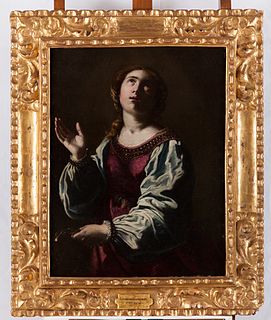 W
WThe Clubfoot is a 1642 oil on canvas painting by Jusepe de Ribera. It is housed in the Musée du Louvre in Paris, and was painted in Naples. Art historian Ellis Waterhouse wrote of it as "a touchstone by which we can interpret the whole of Ribera's art".
 W
WConcord of the State is a 1642 painting by Rembrandt, now in the Museum Boijmans Van Beuningen in Rotterdam. It is signed and dated "REMBRANDT F. 164(.)". In terms of style and theme it is linked to The Night Watch - both paintings include symbolism and allegories of the Dutch Republic and Amsterdam.
 W
WThe Guard Room is a 1642 oil on panel painting by David Teniers the Younger, now in the Hermitage Museum in St Petersburg. It is signed and dated "David Teniers F. 1642" at the bottom left. Several unsigned but probably autograph variants also survive, such as at the Catherine Palace near St Petersburg and the Walters Art Museum in Baltimore, USA. An early copy by an unknown artist after the Hermitage work is now in the National Museum of Sweden.
 W
WIsaac Blessing Jacob is a 1642 religious painting by Gerbrand van den Eeckhout. It shows Jacob kneeling at the bed of his blind father Isaac under the watchful eye of his mother Rebecca as he receives his brother Esau's blessing. It is in the collection of the Metropolitan Museum of Art.
 W
WMilitia Company of District II under the Command of Captain Frans Banninck Cocq, also known as The Shooting Company of Frans Banning Cocq and Willem van Ruytenburch, but commonly referred to as The Night Watch, is a 1642 painting by Rembrandt van Rijn. It is in the collection of the Amsterdam Museum but is prominently displayed in the Rijksmuseum as the best-known painting in its collection. The Night Watch is one of the most famous Dutch Golden Age paintings.
 W
WPeasant Family in an Interior is a large oil painting executed c.1642 by one or more of the French Le Nain brothers, Louis or Antoine. It is in the collection of the Louvre.
 W
WPortrait of Cardinal Richelieu is a portrait painting by the Flemish-born French painter Philippe de Champaigne, Richelieu's favourite portraitist. It was painted a few months before the cardinal's death and is now in the Musée des Beaux-Arts of Strasbourg, France. Its inventory number is 987–2–1.
 W
WPortrait of Margarete Brömsen is a painting by the German Baroque painter Michael Conrad Hirt, painted in 1642 and now in St. Anne's Museum. It is considered a wedding portrait, but a pendant of her husband, Diedrich von Brömsen, is unknown.
 W
WDavid and Jonathan is a painting by the Dutch painter Rembrandt, made in 1642, now in the collection of the Hermitage Museum in Saint Petersburg, Russia. Painted on oak, it is one of the works, together with the Hellenistic sculpture acquired in 1850, The Venus de Taurida, with which the Hermitage began their collection in 1882.
 W
WRiver Landscape is a 1642 landscape painting by the Dutch artist Salomon van Ruysdael. It is now in the Musée des Beaux-Arts of Strasbourg, France. Its inventory numbers is 277.
 W
WSaint Apollonia is a painting attributed to the Italian baroque painter Artemisia Gentileschi executed between 1642 and 1644. It is part of the collection of the Museo Soumaya in Mexico City, Mexico.
 W
WThe Triple Portrait of Cardinal de Richelieu is an oil-on-canvas painting by French artist Philippe de Champaigne, completed c.1642. The portrait shows Cardinal de Richelieu from three angles: right profile, face on, and left profile. The painting was made as a study for a bust to be made by an Italian sculptor in Rome. It is now held by the National Gallery, London.